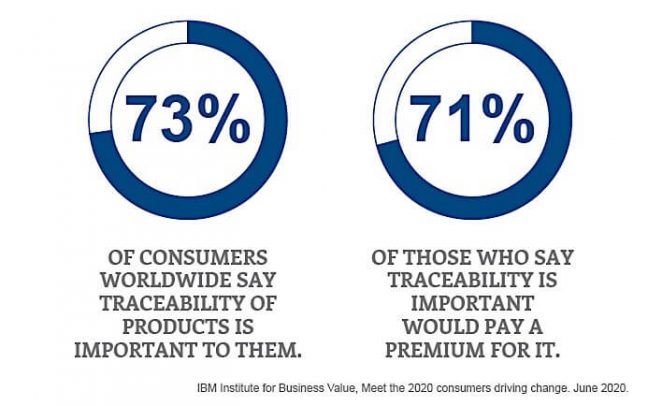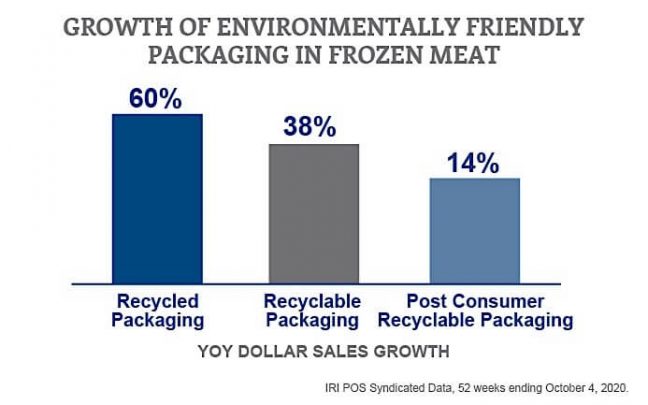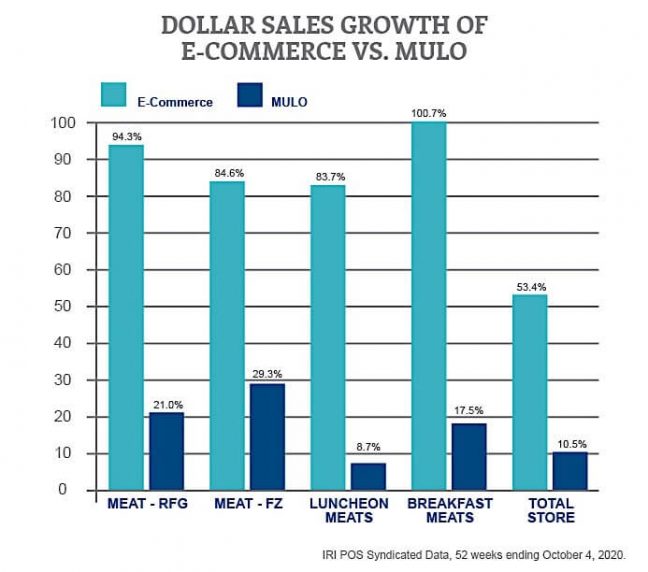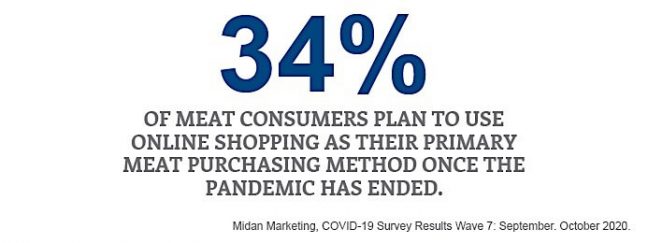Sponsored content
By Michael Uetz, managing principal, Midan Marketing, meat marketing specialists since 2004
The science fiction genre has long been predicting the technologies and foods of the future. In the 1970s and ‘80s, 2021 was a far-off world ripe for narratives. Lucky for  us, few of the stories provided an accurate picture of our reality – we aren’t eating wafers of soybeans, lentils and plankton (or people) as envisioned in Soylent Green, and Blade Runner didn’t quite nail the famine that led to the 2019 diet of fish, seafood and insects. And, while still a few years away, I don’t believe that in 2029, we will be scrounging for rodents to eat à la The Terminator. Even still, we are living in the future and technology is changing every facet of the world – including our food. From farm to fork, technology is on the horizon to help us create a better, more interactive meat case for today’s consumers. Following are a few examples for you to consider.
us, few of the stories provided an accurate picture of our reality – we aren’t eating wafers of soybeans, lentils and plankton (or people) as envisioned in Soylent Green, and Blade Runner didn’t quite nail the famine that led to the 2019 diet of fish, seafood and insects. And, while still a few years away, I don’t believe that in 2029, we will be scrounging for rodents to eat à la The Terminator. Even still, we are living in the future and technology is changing every facet of the world – including our food. From farm to fork, technology is on the horizon to help us create a better, more interactive meat case for today’s consumers. Following are a few examples for you to consider.
DNA Traceability
Starting at the source, livestock producers are being asked to help with traceability efforts to improve transparency. A recent consumer survey showed that 73 percent of consumers worldwide indicate traceability of products is important to them – and nearly all of those said they would pay a premium for it.1 Today’s consumers are used to having a world of information at their fingertips and want the same kind of access to information about their food. For that reason, they gravitate toward brands that provide detailed product information.
For meat, one such technology is DNA TRACEBACK from IdentiGEN, which uses DNA to provide the world’s most precise traceability platform for beef, pork, poultry and seafood. This technology allows meat and seafood products to be reliably traced back through production to the farm, parent or individual animal from which they originated. This level of transparency will satisfy even the most skeptical of consumers.
Processing Automation
Automation within the meat industry has been considered too difficult for many years due to the complexity of dissembling meat carcasses. However, when COVID-19 put a spotlight on processing facilities, automation became a hot topic for discussion. Today, artificial intelligence, robots and machine learning are at a point where a true conversation can be had about automated meatpacking.
Internationally, parts of meat processing have been automated for years. Hilton Food Group, for example, has been constructing and running automated facilities across Europe for 25 years. Beginning with primals, programmed robots trim and cut meat into finished, packaged products with minimal human contact.
“In addition to increased food safety, automation creates efficiencies that aren’t an option with traditional meatpacking,” explained Paul Armstrong, business development director for Hilton Food Group. “By saving time in processing, the product is fresher when it arrives to the customer. Plus, we have the ability to quickly retool our operations for changing retailer and consumer needs.”

Packaging Innovations
Whether they realize it or not, packaging impacts consumers’ food purchases. More than 80 percent of shoppers have been driven to purchase one product over another because of a packaging feature, such as being resealable, having clear nutritional labeling or being environmentally friendly.2 In the meat case, consumers are drawn to products with packaging that is vacuum sealed for freshness.3 COVID-19 accelerated consumers’ desire for vacuum sealed meat because it could be easily sanitized as well as frozen, tying into their stockpiling tendencies.
Recently, environmental friendliness and sustainable packaging have also been in the spotlight. According to IRI data, recycled and recyclable packaging have both seen significant growth in meat. Frozen meat in recyclable packaging has had year-over-year dollar sales growth of 38 percent. Recycled packaging has seen an even greater jump at 104 percent year-over-year dollar sales growth for luncheon meat and 60 percent for frozen meats.4

Future packaging innovations will likely continue to focus on sustainability but may also begin to tie into the Internet of Things, the network of physical objects (like smart TVs and refrigerators) which can exchange data with other devices over the internet. Smart packaging will be able to weigh contents and automatically reorder or add items to a grocery list as it nears depletion. Imagine, even, packaging for a pre-seasoned pork tenderloin talking directly to a smart oven to tell it the exact time and temperature needed for cooking.
E-commerce
COVID-19 unquestionably advanced the adoption of e-commerce by several years, especially related to grocery. As total store saw spikes in dollar sales growth in the spring, grocery e-commerce saw even larger, maintained growth. At its peak in May, grocery e-commerce was at 95 percent growth year-over-year – the same time, multi outlet (MULO)† sales were experiencing 20 percent growth.4 Similar numbers appear when comparing dollar growth of meat sales. According to IRI data, refrigerated meat sold via e-commerce is up 94.3 percent over the year, while MULO refrigerated meat sales rose about 21 percent.5
“During the pandemic, e-commerce sales for refrigerated meat, frozen meat, breakfast meats and luncheon meats all outperformed the same categories in MULO,” explained Erkin Peksoz, IRI consultant.

Midan Marketing’s own research shows that 34 percent of meat consumers plan to use online shopping as their primary meat purchasing method once the pandemic has ended.6
But even though adoption of e-commerce is high, retailers have to consider that many consumers want to see their fresh products, like meat, before buying. There is an opportunity here to introduce extended reality technologies to allow consumers to pick their actual package of meat from a virtual meat case on their phone. Or the opportunity might be with machine learning to gather consumers’ individual meat preferences and use that data for picking the perfect cut each time.

Technology abounds in 2021, and consumers have begun to expect a certain level of interactivity from the brands they buy and the retailers they visit. While none of these technologies are quite as far-out as sci-fi stories led us to believe the 2020s would be, we’ve entered a fascinating level of futurism when we begin extracting DNA from meat and work toward automating meat processing. Staying on the cutting edge of technology will likely mean better and safer meat, plus a more streamlined buying experience. I for one can’t wait to see what the future of the meat case brings.
1 IBM Institute for Business Value, Meet the 2020 consumers driving change. June 2020.
2 Mintel, Food Packaging Trends Incl. Impact of COVID-19 – US. July 2020.
3 Mintel, Packaged Red Meat – US. March 2019.
4 Dollar Sales Growth of E-Commerce vs. MULO.
5 IRI POS Syndicated Data, 52 weeks ending October 4, 2020.
6 Midan Marketing, COVID-19 Survey Results Wave 7: September. October 2020.
† MULO includes many sales channels: food/grocery, drug stores, mass merchandisers, club stores, dollar stores and military commissaries.

